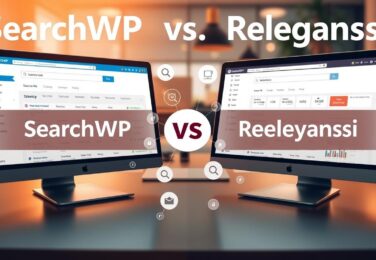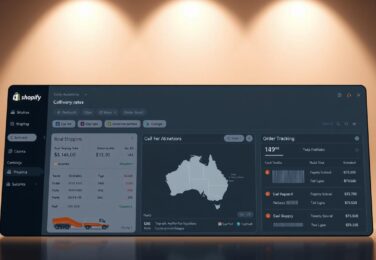Salesforce Integration with WordPress

Table of Content
In today’s fast-paced digital world, businesses look for ways to improve their operations and connect with customers better. As a business owner or marketer, you know how crucial it is to use powerful tools to grow and stay competitive. That’s why integrating Salesforce, a top CRM platform, with WordPress, the most popular CMS, is key.
Imagine linking your website with your CRM easily. This lets you capture leads, manage customer interactions, and analyze data all in one place. With Salesforce integration, your WordPress site can offer personalized experiences, automate tasks, and provide insights into your audience.
In this article, we’ll show you how to link Salesforce with WordPress. We’ll cover the benefits, APIs, and best practices for a smooth connection. Whether you run a small business or aim to improve your marketing, this guide will help you unlock Salesforce’s power for your WordPress site.
Key Takeaways
- Discover the benefits of integrating Salesforce with WordPress for enhanced customer engagement and streamlined operations
- Explore the various Salesforce APIs available for seamless data syncing and integration
- Learn how to set up the foundation for Salesforce integration with WordPress
- Understand the process of mapping data fields between Salesforce and WordPress for effective crm integration
- Gain insights into choosing the right Salesforce integration approach, whether plugin-based or custom-tailored
Understanding the Benefits of Salesforce Integration with WordPress
Integrating Salesforce with your WordPress site opens up new opportunities for your business. It connects two powerful platforms, making your business process automation smoother, improving system interoperability, and ensuring seamless application integration. Let’s dive into the main benefits of this integration.
One big plus of combining Salesforce with WordPress is syncing customer data. This lets you see your customers fully, helping you offer better service and personal interactions. With data updating in real-time, your team always has the latest info, no matter where they work.
Another key advantage is automating workflows and processes. Using both platforms together, you can make your operations smoother, cut down on manual work, and increase productivity. For instance, leads can be automatically created in Salesforce when someone fills out a form on your WordPress site. Or, order data can be synced between platforms to keep records accurate.
“Integrating Salesforce with WordPress has revolutionized the way we manage our customer relationships and streamline our business processes.” – Sarah Thompson, Marketing Manager
Also, this integration lets you use data analytics to your advantage. By combining data from both platforms, you can understand customer behaviour, preferences, and trends better. This knowledge helps you make better decisions, improve your marketing, and spot chances for growth.
In short, combining Salesforce with WordPress brings many benefits, such as:
- Seamless data syncing between platforms
- Personalized customer interactions and better service
- Automated workflows for more productivity
- Insights for making informed decisions
By using Salesforce integration with WordPress, you can elevate your business, streamline operations, and give your customers amazing experiences.
Exploring the Salesforce APIs for Seamless Integration
Integrating Salesforce with your WordPress site is key for smooth data exchange. Salesforce has various APIs for different needs. They help connect your WordPress site with Salesforce easily.
Let’s look at the main Salesforce APIs for easy integration. We’ll see how they help your WordPress site.
REST API: Enabling Data Exchange and Interoperability
The Salesforce REST API is great for linking Salesforce with WordPress. It makes data sharing and working together simple. You can get, make, change, and delete records in Salesforce from your WordPress site.
Using the REST API is easy and simple. It uses a clear request-response model. This makes it easy for developers of all levels. It’s perfect for syncing contact info, updating lead status, or getting sales data.
SOAP API: Robust Integration for Complex Scenarios
For complex needs, the Salesforce SOAP API is the answer. It has lots of operations and features for strong integration with WordPress.
The SOAP API lets you do advanced queries and complex business logic. It’s safe and reliable for big data. It keeps your data consistent across both platforms.
Streaming API: Real-Time Data Synchronization
The Salesforce Streaming API is best for real-time updates. It lets your WordPress site get updates from Salesforce instantly. This keeps your data fresh.
With the Streaming API, your WordPress site can show the latest data from Salesforce. It’s great for live sales metrics, updating customer info, or reacting to events. It makes your site interactive and data-driven.
Using these APIs to link Salesforce with WordPress opens new doors. The right tools and data mapping unlock Salesforce’s full power in your WordPress site. This creates a smooth and efficient system for your business.
Setting Up the Foundation for Salesforce Integration
Before starting your Salesforce integration with WordPress, you need a solid base. This means setting up your Salesforce, getting API keys, and getting your WordPress ready for smooth data syncing.
First, log into your Salesforce and go to the setup area. You’ll need to make a connected app to let your WordPress site use Salesforce APIs. This app will give you a consumer key and secret for logging in.
Then, decide which Salesforce data you want to share with WordPress. This could be contacts, leads, or custom data. Make a list to know what data will move between systems.
On the WordPress side, install a Salesforce integration plugin or a custom solution. This plugin will help connect to Salesforce and manage data syncing.
Good planning and setup are crucial for a smooth Salesforce and WordPress integration. Understand your data needs and set up everything before starting the integration.
Test the Salesforce and WordPress link in a staging area before using it live. This helps find and fix problems without affecting your main site.
| Step | Description |
|---|---|
| 1 | Configure Salesforce settings and create a connected app |
| 2 | Obtain API credentials (consumer key and consumer secret) |
| 3 | Identify Salesforce objects and fields for syncing |
| 4 | Install and activate a Salesforce integration plugin on WordPress |
| 5 | Test the connection in a staging environment |
By taking these steps, you’re ready for a successful Salesforce integration project. This will make data syncing between your WordPress site and Salesforce CRM easy.
Mapping Data Fields Between Salesforce and WordPress
When you link Salesforce with your WordPress site, mapping data fields is key. This step makes sure the right info moves well between the two. A good data mapping plan keeps your data the same everywhere, making application integration easier.

First, pick the important data to share between Salesforce and WordPress. This might include:
- Contact information (name, email, phone)
- Lead details (source, status, notes)
- Account information (company name, industry, size)
- Opportunity details (stage, amount, close date)
After picking the key data, set up data mapping rules. These rules show how data moves from one system to the other. For example, you might link the “Company Name” field in Salesforce to the “Organisation” field in WordPress.
Identifying Key Data Points for Synchronization
To find out which data is most important for data syncing, think about a few things:
- Business needs: What data is vital for your work and reports?
- User needs: What data is needed for your WordPress site to work well and be easy to use?
- Data consistency: Make sure the data types and formats match.
Establishing Data Mapping Rules and Transformations
When making data mapping rules, remember a few tips:
- Use simple names for fields to avoid mix-ups.
- Check data to keep it correct during application integration.
- Think about privacy and security when mapping sensitive info.
- Test your rules well to find and fix any problems.
Good data mapping is the base of a great Salesforce-WordPress link. By spending time on key data and clear rules, your data will move smoothly between systems. This lets you use the strengths of both platforms.
Choosing the Right Salesforce Integration Approach for Your WordPress Site
There are different ways to link Salesforce with your WordPress site. Each method has its own benefits and fits different business needs. Let’s look at two common methods: plugin-based integration and custom integration.
Plugin-based integration makes it easy to connect Salesforce with WordPress. It’s perfect for businesses that want a simple solution without getting into technical details. With plugins, you can set up basic salesforce integration like syncing contact forms and capturing leads with just a few clicks.
Plugin-Based Integration: Simplifying the Process
One big plus of plugin-based integration is how easy it is to use. Even if you’re not tech-savvy, you can still set it up using the plugin’s settings. Plugins like WordPress-to-Salesforce and WP Fusion have user-friendly interfaces and guides to help you start.
“Plugin-based integration is a game-changer for businesses looking to streamline their application integration process. It eliminates the need for complex coding and allows us to focus on what matters most – growing our business.”
Custom Integration: Tailoring to Specific Business Requirements
While plugin-based integration works for many, some businesses need a more custom solution. Custom integration means creating a unique solution that fits your business perfectly. This way, you have full control over how data moves between WordPress and Salesforce.
With custom wordpress to salesforce integration, you can tailor data mapping, implement advanced synchronisation, and create custom workflows. It lets you use Salesforce’s APIs fully, making the integration seamless and fitting your business perfectly.
Choosing between plugin-based and custom integration depends on your business’s complexity, technical skills, and budget. Plugin-based integration is fast and affordable for basic needs. Custom integration offers more flexibility and scalability for complex needs.
Implementing Salesforce Integration with WordPress Plugins
Adding Salesforce to your WordPress site can change the game for your business. Salesforce integration makes managing customer relationships easier and boosts your online presence. WordPress has many plugins to help with the WordPress to Salesforce integration process.

When picking a Salesforce plugin for WordPress, look at ease of use, compatibility, and needed features. Some top choices include:
- WP Fusion: A flexible plugin for deep CRM integration with Salesforce. It syncs user data, tags, and more.
- Salesforce Suite: Offers many features like lead capture, form integration, and automatic data sync.
- WordPress-to-Lead for Salesforce CRM: A straightforward plugin for capturing leads and sending them to Salesforce.
Choosing your plugin, the installation is easy. Go to the WordPress plugin repository, search, and click “Install Now.” After activation, set up the plugin by entering your Salesforce API details and mapping data fields.
The key to successful Salesforce integration with WordPress is to ensure that the data mapping between the two platforms is accurate and complete.
With your plugin set up, enjoy the benefits of Salesforce integration. For instance, leads from your WordPress site can go straight to Salesforce, saving time. You can also show Salesforce data on your WordPress pages, like customer feedback or product details, making it better for users.
Remember, data security and privacy are crucial when integrating Salesforce with WordPress plugins. Always handle customer info securely and keep your plugins updated for the best performance and compatibility.
Developing Custom Salesforce Integration Solutions
For businesses with unique needs, custom Salesforce integration might be the best choice. It ensures data flows smoothly between Salesforce and WordPress. This boosts system interoperability and cloud connectivity.
Starting a custom integration requires using the WordPress API. This API is key for connecting Salesforce and WordPress. It makes the integration process smooth and efficient, reducing disruptions.
Implementing Salesforce OAuth Authentication
Security is crucial when linking Salesforce with WordPress. Salesforce OAuth authentication is essential for data safety. It allows only approved users and apps to access the system. This keeps sensitive data secure.
Building Custom Synchronization Mechanisms
Keeping data in sync between platforms is vital. Custom sync mechanisms help define how and when data is updated. This ensures data is current in both systems, whether it’s instantly or on a schedule.
Custom integration unlocks Salesforce’s full potential. It leads to better workflows, clearer data, and improved business results. A well-made custom integration solution is key to achieving these benefits.
Best Practices for Salesforce Integration with WordPress
Integrating Salesforce with WordPress needs careful attention to ensure it works well and securely. By following these tips, businesses can use Salesforce’s power while keeping WordPress easy to use. Let’s look at some important steps for a good integration.
Ensuring Data Security and Privacy
Keeping data safe is key when linking Salesforce with WordPress. Use strong security steps like secure API links, data encryption, and access controls. This protects important customer info. Also, keep your security up to date to avoid risks.
Make sure you follow data privacy laws like GDPR. This helps keep customer trust and avoids legal trouble.
Optimizing Performance and Scalability
As your business grows, so does the data between Salesforce and WordPress. To keep things running smoothly, optimize your setup. Use smart data syncing and caching to speed things up.
Keep an eye on how well your integration works. Fix any problems quickly to avoid slowdowns.
Implementing Error Handling and Logging
Linking Salesforce with WordPress can be complex. To keep things reliable, set up good error handling and logging. This helps find and fix problems fast.
Use retry features for network issues or API limits. Set up alerts to catch and fix problems early. This keeps data flowing smoothly between Salesforce and WordPress.










